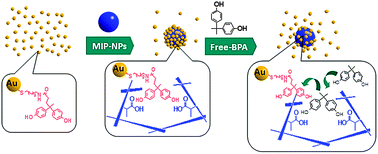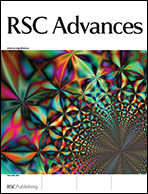Supraparticles comprised of molecularly imprinted nanoparticles and modified gold nanoparticles as a nanosensor platform†
Abstract
A highly selective and sensitive nanosensing system for small molecules is proposed based on the supraparticles of molecularly imprinted polymer nanoparticles (MIP-NPs) and modified gold nanoparticles (Au-NPs). The MIP-NPs function as molecular recognition materials and the Au-NPs function as signal transduction materials, from molecular recognition-based binding events to spectral changes of localized surface plasmon resonance (LSPR) of Au-NPs in the visible region. This novel supraparticles-based nanosensing system enables specific sensing towards target molecules that can be achieved simply, rapidly and inexpensively, using only a UV-vis spectrophotometer. Moreover, an affinity constant is obtained with this sensing system that is 120 000 times larger than that previously reported. As a result, a sub-nanomolar concentration of target molecules was successfully detected, which is comparable to the corresponding enzyme-linked immunosorbent assays. The proposed supraparticles-based spectroscopic sensing system could open a new era for sensing tools in a broad range of important research/industrial fields, such as the environmental, life, medical and pharmaceutical sciences.


 Please wait while we load your content...
Please wait while we load your content...